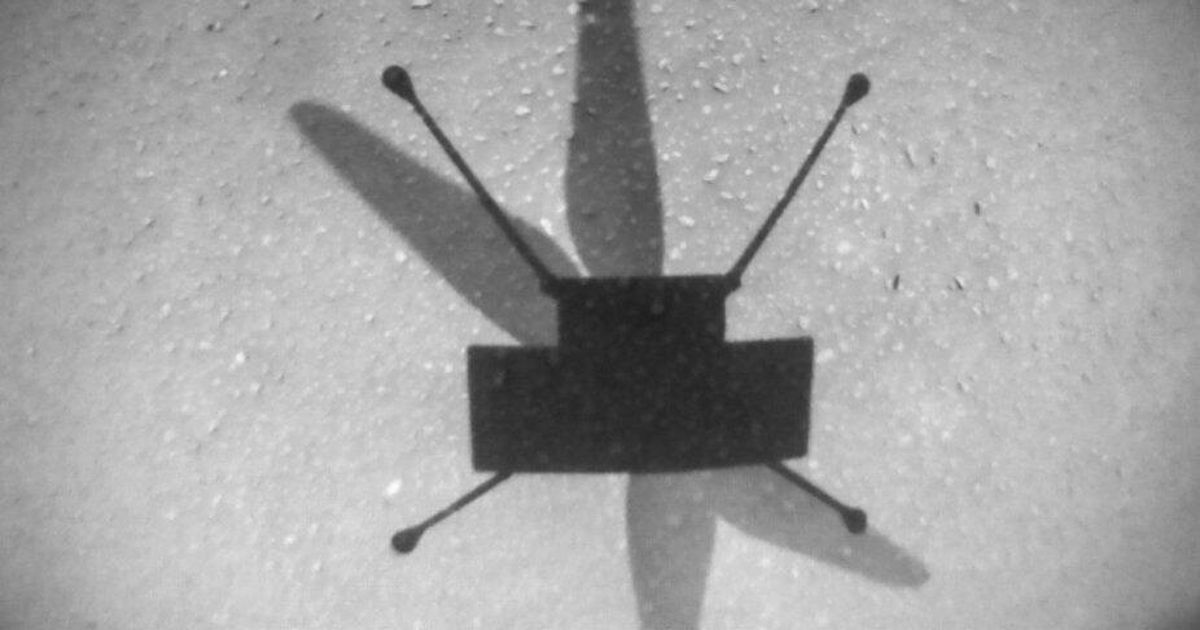
NASA Mars helicopter pulls off 'most nerve-wracking flight since Flight 1'
Ingenuity saw its own shadow during its ninth flight.NASA/JPL-CaltechWhen NASA sent the Ingenuity helicopter to Mars, it was gamble. Now it's pushing its limits, flying fast and reaching new heights. NASA announced on Monday Ingenuity successfully completed its ninth and "most challenging" flight yet.NASA's goal was to go big with a daring "high-speed flight across unfriendly terrain" that would take the rotorcraft far from its robotic buddy, the Perseverance rover.Instead of merely hopping ahead of the the rover, the helicopter took a shortcut over a sandy area, setting records for distance, air time and speed in the process. It hit a speed of 16 feet (5 meters) per second and flew for 166.4 seconds while snapping images of the landscape below.The terrain below presented some new challenges for the helicopter's navigation system, which was designed to deal with fairly flat ground. Ingenuity had to make sense of "high slopes and undulations" and its team was concerned that the machine might accidentally land in a treacherous area. NASA described it as "the most nerve-wracking flight since Flight 1."NASA's announcement Monday seems to indicate the chopper handled itself well. While the flight was risky, it made sense for what was always considered a high-risk, high-reward technology experiment.Ingenuity has already overcome a variety of potential obstacles, from a software glitch to an in-flight anomaly. "A successful flight would be a powerful demonstration of the capability that an aerial vehicle (and only an aerial vehicle) can bring to bear in the context of Mars exploration traveling quickly across otherwise untraversable terrain while scouting for interesting science targets," NASA said. Follow CNET's 2021 Space Calendar to stay up to date with all the latest space news this year. You can even add it to your own Google Calendar.
……
Comments
Leave a comment in Nestia App